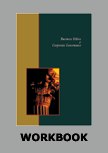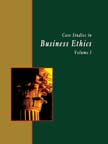Business Ethics and Governance Issues at HP: The Pretexting Controversy
|
|
ICMR HOME | Case Studies Collection
Case Details:
Case Code : BECG070
Case Length : 19 Pages
Period : 2005-06
Pub Date : 2007
Teaching Note :Not Available
Organization : HP
Industry : Computer Hardware
Countries : US
To download Business Ethics and Governance Issues at HP: The Pretexting Controversy case study
(Case Code: BECG070) click on the button below, and select the case from the list of available cases:

OR

Buy With PayPal
|
Price:
For delivery in electronic format: Rs. 400;
For delivery through Shipping & Handling Charges extra: Rs. 400 +Shipping & Handling Charges extra
»Business Ethics Case Studies
» Case Studies Collection
» ICMR Home
» View Detailed Pricing Info
» How To Order This Case
» Business Case Studies
» Case Studies by Area
» Case Studies by Industry
» Case Studies by Company
Please note:
This case study was compiled from published sources, and is intended to be used as a basis for class discussion. It is not intended to illustrate either effective or ineffective handling of a management situation. Nor is it a primary information source.
Chat with us

Please leave your feedback

|
|




<< Previous
Excerpts Contd...
The Findings
|
The investigating agency identified that a member of the Board of Directors, George Keyworth (Keyworth), had leaked the information to the press, and conveyed the information to Dunn. On March 15, 2006, a meeting was arranged where Hurd met the investigating team to know who was leaking the information. During the company board meeting on the same day, Hurd met Keyworth and asked him to admit that he had leaked the information, but he denied doing so. Hurd and Dunn then deliberated on how to present this information to the board. Another board member Tom Perkins (Perkins), who was also the Chairman of the Nomination and Governance Committee, was also informed about these investigations...
|

|
The Aftermath
At the end of June 2006, Perkins asked HP's external counsel Sonsini to examine the legalities of the investigative methods used to obtain the information. Sonsini replied that the information was obtained through pretexting. In July 2006, Perkins asked Sonsini and Hurd to change the minutes of the board meeting on May 18, 2006, to include the fact that he had resigned from the board in protest against the methods used in the investigation. This called for filing of a new form with SEC. In a subsequent letter to the board, he wrote about the illegal practices used by HP...
|
|
Who is Responsible?
Dunn claimed that she was unaware that illegal methods were used and refused to acknowledge that pretexting was carried out with her knowledge. She said, "The idea that I supervised, orchestrated, approved all of the ways in which this investigation occurred is just a complete myth. It's a falsehood. It's a damaging lie." Though Dunn proclaimed her innocence, internal correspondence in the company showed that officials had been skeptical of the method of investigation used and had sought Dunn's opinion. Dunn admitted that during investigation, she had never considered herself to be the supervisor, and was of the view that she had helped the investigators in carrying out their task... |
The Road Ahead
The legal charges against HP and the payment made by the company to settle civil claims did not seem to have any adverse affect on the stock price of HP, which hit a 52-week high of US$ 41.7 on December 27, 2006. According to an industry analyst, Charles King, "There seems to be a fundamental disconnect between the severity of the charges for the people who have been indicted and what the (financial) market thinks about this, the market seems to be shrugging off all this stuff." Analysts opined that Hurd's position had not been affected by the scandal...
Exhibits
Exhibit I: The HP Way
Exhibit II: HP - Standards of Business Conduct
Exhibit III: HP - Code of Ethics
Exhibit IV: HP's Stock Price Chart (January 2005 - December 2006)
Exhibit V: HP's Financial Data
Exhibit VI: HP - Core Values
|
|









